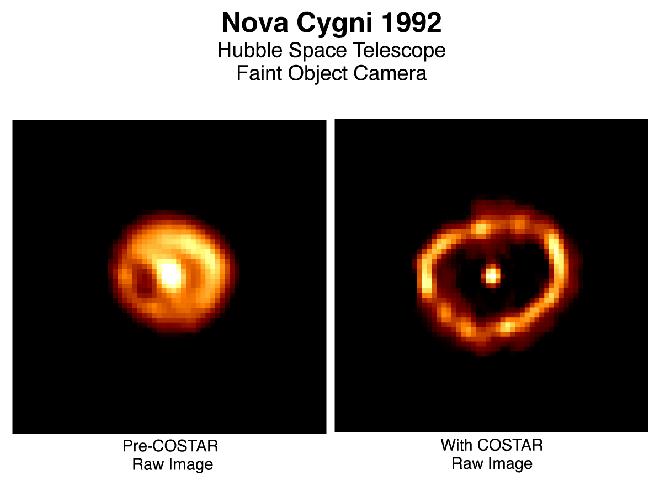
Novae occur in systems where an accreting white dwarf is receiving matter from a binary companion.
The matter accreting from the binary companion builds up on the surface of the white dwarf, creating a layer of hydrogen is created. This layer of hydrogen sits on top of the rest of the white dwarf, which is composed mainly of carbon and oxygen. As the hydrogen builds up, the pressure and temperature at the white dwarf's surface grows and grows. Eventually, it may become hot enough to fuse the hydrogen into helium.
When it gets this hot, the hydrogen fuses very quickly. The entire surface of hydrogen gets blown off the white dwarf because of this. The explosion which obliterates the surface is called a nova.
Only the built up surface gets blown away. The white dwarf is left intact
underneath. As the blown off material floats away into space to become
part of the intersteller medium, the accreting white dwarf is left behind to start the
cycle all over again.